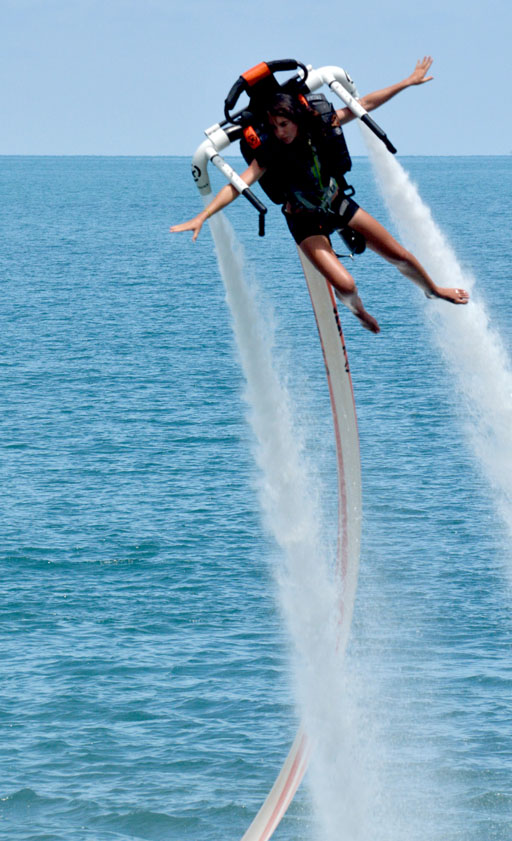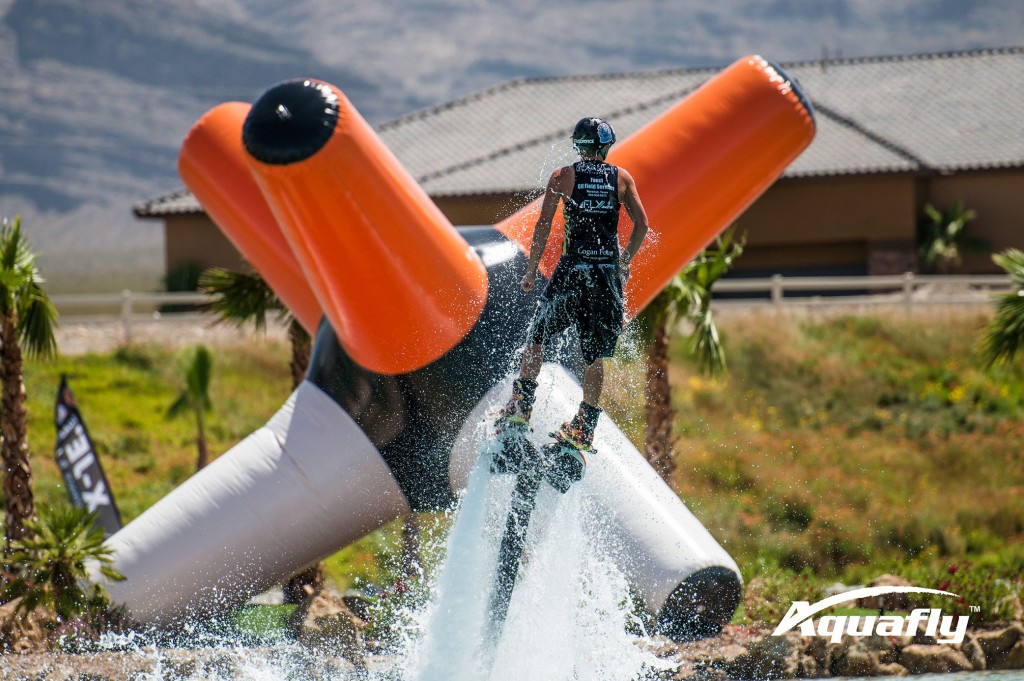On the first few generations of Flyboards, the rider’s feet were mounted to a single board and could not tilt independently, in order to turn a board, it required twisting the body and lifting one leg to tilt the board off-axis in combination. When we first introduced the Jetblade with independent feet in July of 2014, Frank Zapata put forth the myth of the “spontaneous death spiral”, saying that individual foot freedom can only come at “a dangerous cost”. He had naturally “tried this the very first week” and found it far too dangerous. He elaborated that the rider’s feet would be overpowered by the jets and the rider would be unable to control the board resulting in the board spinning out of control. “Broken ankles from over flexion would surely be the result” and of course riders being injured. This was and is, of course, nonsense, there are zero leveraging forces on your ankles, and the nature of the board and of all hydro sports is that the forces push on you and move you, not twist you into pieces. Many fellow Flyboarders bought into and spread this meme and it became the reason to explain why they did not have the feature. We spent a good deal of energy in the first year setting the record straight and engaging with otherwise intelligent people on why theory held no merit and was fiction. Thousands of people in the real world took their first lessons on Jetblades and flew, little kids flew, older people flew, everyone was able to move and fly freely with no “complications”. Ben Merrell was killing it with adding axial spirals to his tricks and yet the discussion still turned to how difficult it must be. Yet the word spread, the Jetblade could do things no other board could do at the time.
Doubling down and risking it to maintain the hyperbole, the over-reaction.
In order to maintain this dramatic stance, in 2014 Frank instructed his product engineering company to come up with a solution to back him up on this nonexistent problem. Using heavy springs and pins and axles and stops, Zapata Racing’s design company’s designers fabricated a complicated contraption that “protected” the rider from these nonexistent forces. To make matters worse, in order to compensate for being behind the eight ball in development, the directive was given to make the board out of plastic. The idea being that ZR could “kill” the competition in price and be able to drive others out of the market. Sadly, as with all things complicated, this only ended up making more and more problems once the board started to be used and tested in the real world. Pins bent, plastic nozzles broke, springs required two people to change, pins unscrewed and fell out. More recently, however, the very same fictional problem of the “death spiral” that was spread as a rumor, became a reality on the new plastic flyboard, aka the “Pro Series Flyboard 2015”. Due to the soft character of the injected plastic top deck and all of the forces working on the springs and pins under the board, the two twisting decks actually can become locked against each other in the twisted position, leaving the rider helpless in mid-air to change the angle from maximum twist. A continuous spiraling force is exerted on the rider until he inevitably and nearly instantaneously impacts the water. So was it a dick move to make up a story about people getting hurt and killed on the Jetblade? Yeah. Should the “spontaneous death spiral” get renamed the “karmic death spiral”? Absolutely. Have they addressed the problem? Attention has been turned to the next “big thing” and the Flyboard Pro Series stopped production and the remaining overstock continues to be sold with springs and blocks and dozens of unnecessary, unreliable parts.
Is it a good design? Categorically no, despite Simon’s sycophantic attempts at revisionism.

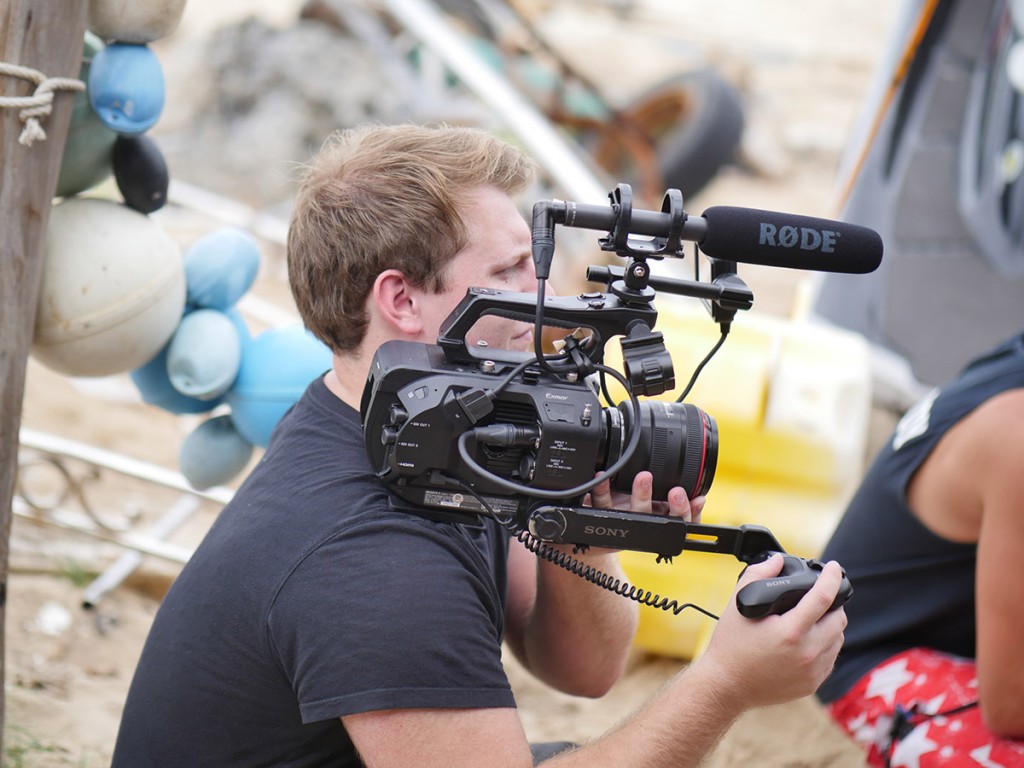
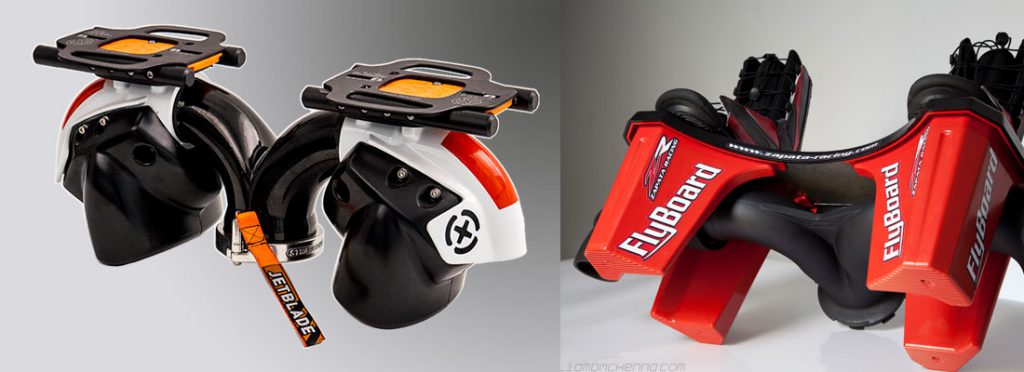
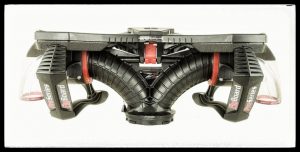
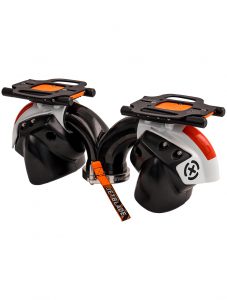 You currently ride a Flyboard™* Pro Series or Legend are looking at moving over the an alloy independent foot Jetblade. How does a Jetblade compare to a Zapata Flyboard™*? What are the differences and advantages?
You currently ride a Flyboard™* Pro Series or Legend are looking at moving over the an alloy independent foot Jetblade. How does a Jetblade compare to a Zapata Flyboard™*? What are the differences and advantages?